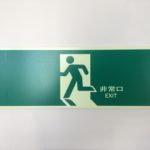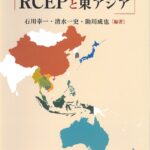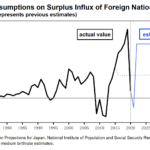The Japanese government lacks the coercive authority to control the population or order it to act, but this has not prevented it from containing the COVID-19 outbreak, writes Odaki Kazuhiko.
The coronavirus is causing tremendous damage around the world. China or South Korea experienced the earliest explosive spikes in infections, but it is European countries and the United States that are recording the highest numbers of infections and deaths. In South Korea, Taiwan, Singapore, Japan and other Far Eastern countries and regions, infections are limited and death tolls are particularly low. In China and South Korea, the numbers of new cases have already dropped sharply and the numbers of deaths per capita have eventually lowered, even though these countries had reported high infection figures earlier than other countries.
Dozens of countries are fighting the coronavirus in dozens of different ways. The whole world is focused on which measures are effective. In Italy, Spain, the United States and other countries, the closing of restaurants and restrictions on people going out are in place. South Korea, Taiwan and Singapore have implemented measures that control individuals, with personal behaviors being monitored and those who have contacted anyone who tests positive for the virus being subject to testing and isolation. China is taking both types of measures.
On television in different countries, there are heated discussions every day about which approach is most effective and which approach should be taken in their countries. An obvious trend that grabs people’s attention is that mortality rates are extremely low in Far Eastern countries and regions. Surprisingly, their measures have nothing in common. Handwashing is common in some nations while it is not in others. Some countries have a dry climate while other countries have high humidity. Some countries imposed a lockdown while others did not. We may probably be overlooking some key factor that has kept Far Eastern countries and regions’ death tolls low. Until it is identified, China’s powerful government, the submissiveness of the Japanese people, and other factors will be misunderstood to have had some significant effect.
It is especially necessary to think carefully about the Eastern-style approaches adopted by authorities in Far Eastern countries. China, South Korea, Taiwan and Singapore have used personally identifying information and monitor personal behavior through GPS data and credit card records. In these countries, screens would instantly show, for example, that one visitor to a hospital made a trip to Spain last month, visited another hospital last week, and ten days ago took the same train as a person who tested positive yesterday. Control over individuals beyond anything George Orwell had imagined is taking place.
In contrast, states that may have once been considered part of the Western Block respect privacy and human rights. As a result, we have been unable to implement strict controls over individuals and barely implemented traditional measures that date back to the fourteenth century, such as the closure of restaurants and restrictions on going out. Some argue that the spread of the virus in these Western countries was due to the unavailability of the option to take oppressive measures that exert more control over individuals as has been done in Far Eastern countries.

Passenger train use fell dramatically in Tokyo and other cities as people followed government advice to “stay home.” THE JAPAN JOURNAL
However, it is likely that there is an unknown key factor that may explain the low mortality rates in the Far East, and Japan has provided the most significant piece of evidence for this. While it is at the easternmost edge of the Far Eastern countries and regions, Japan has not adopted any Eastern-style measures. In Japan, medical institutions are not permitted to investigate whether or not specific persons have traveled overseas or other personal information. Positional information from cellphones, credit card records and RFID card records of train journeys are all personal information, and are treated as such. Public health authorities have no access to this data. Many infected Japanese individuals do not talk about their past activities to avoid causing their friends problems due to the necessary preventive isolation measures. Things do not happen in an Eastern way.
In addition, Japan has not imposed any restrictions on restaurant operations or on people going out like those in Western countries, including the United States and Spain. The prime minister and prefectural governors have merely made requests that have not been fully complied with.
Japan has neither implemented coercive actions over individuals as seen in Far Eastern countries nor has it issued any orders to limit outdoor activities or to enforce restaurant closures as has been seen in Western countries, because the Japanese government is not permitted to take either of these measures. The government lacks the coercive authority to control the population or order it to act.
After its defeat in the war seventy-five years ago, Japan constructed a government that is diametrically opposed in its nature to its past totalitarian government.
While Japan is geographically located on the eastern edge of the Far Eastern countries and regions, its government is connected to the governments of Western countries. It has one of the weakest governments in the world. Despite that, the damage done by the coronavirus in Japan has been very limited, as limited as that of other Far Eastern countries and regions that have taken heavy-handed measures. This is an encouraging example to those who abhor governmental control.
ODAKI Kazuhiko is a professor at Nihon University and consulting fellow at the Research Institute for Economy, Trade and Industry.








